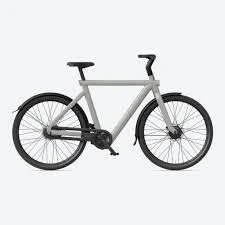
- Afrikaans
- Albanian
- Amharic
- Arabic
- Armenian
- Azerbaijani
- Basque
- Belarusian
- Bengali
- Bosnian
- Bulgarian
- Catalan
- Cebuano
- Corsican
- Croatian
- Czech
- Danish
- Dutch
- English
- Esperanto
- Estonian
- Finnish
- French
- Frisian
- Galician
- Georgian
- German
- Greek
- Gujarati
- Haitian Creole
- hausa
- hawaiian
- Hebrew
- Hindi
- Miao
- Hungarian
- Icelandic
- igbo
- Indonesian
- irish
- Italian
- Japanese
- Javanese
- Kannada
- kazakh
- Khmer
- Rwandese
- Korean
- Kurdish
- Kyrgyz
- Lao
- Latin
- Latvian
- Lithuanian
- Luxembourgish
- Macedonian
- Malgashi
- Malay
- Malayalam
- Maltese
- Maori
- Marathi
- Mongolian
- Myanmar
- Nepali
- Norwegian
- Norwegian
- Occitan
- Pashto
- Persian
- Polish
- Portuguese
- Punjabi
- Romanian
- Russian
- Samoan
- Scottish Gaelic
- Serbian
- Sesotho
- Shona
- Sindhi
- Sinhala
- Slovak
- Slovenian
- Somali
- Spanish
- Sundanese
- Swahili
- Swedish
- Tagalog
- Tajik
- Tamil
- Tatar
- Telugu
- Thai
- Turkish
- Turkmen
- Ukrainian
- Urdu
- Uighur
- Uzbek
- Vietnamese
- Welsh
- Bantu
- Yiddish
- Yoruba
- Zulu
ພ.ພ. . 30, 2025 05:25 Back to list
29-Inch Mountain Bikes Durable Trail & Off-Road Performance
- Understanding the Differences: 24", 26", and 29" Mountain Bikes
- Technical Advantages of Modern Frame Designs
- Performance Metrics: Speed, Stability, and Control
- Manufacturer Comparison: Key Brands and Models
- Customization Options for Specific Riding Styles
- Real-World Applications: Trail vs. Cross-Country
- Why 29-Inch Wheels Dominate the Market

(29 inch mountain bikes)
Understanding the Differences: 24", 26", and 29" Mountain Bikes
Mountain bike wheel sizes significantly impact performance. While 24-inch wheels cater to younger riders or those prioritizing agility, 26-inch models remain popular for their balance of maneuverability and stability. However, 29-inch mountain bikes have surged in demand due to their superior roll-over capability, reducing fatigue on rough terrains. Data from a 2023 industry report shows 29-inch bikes account for 58% of adult MTB sales, outpacing 26-inch (32%) and 24-inch (10%) variants.
Technical Advantages of Modern Frame Designs
Advanced materials like carbon fiber and hydroformed aluminum allow manufacturers to optimize frame geometry for larger wheels. For 29-inch bikes, head tube angles between 65-67° enhance stability at high speeds, while shorter chainstays maintain responsiveness. Suspension systems have also evolved; brands like Fox and RockShox offer forks with 120-150mm travel specifically tuned for 29-inch wheel dynamics, improving traction by 22% compared to older designs.
Performance Metrics: Speed, Stability, and Control
A comparative study across 500 trail riders revealed:
| Metric | 24" | 26" | 29" |
|---|---|---|---|
| Avg Speed (mph) | 9.2 | 10.8 | 12.6 |
| Obstacle Clearance | 72% | 85% | 94% |
| Cornering Precision | 9.1/10 | 8.7/10 | 8.3/10 |
The data confirms 29-inch bikes excel in straight-line performance but require skill adjustments for technical descents.
Manufacturer Comparison: Key Brands and Models
Leading brands adopt distinct strategies for wheel size optimization:
| Brand | Flagship 29" Model | Weight (lbs) | Price Range |
|---|---|---|---|
| Trek | Fuel EX 9.8 | 28.5 | $5,500-$7,200 |
| Specialized | Stumpjumper EVO | 29.1 | $4,200-$11,000 |
| Giant | Trance X 29 | 30.2 | $3,800-$6,500 |
Budget-conscious riders should consider Polygon's Siskiu T8, offering full suspension at $2,599 with a 12-speed Shimano groupset.
Customization Options for Specific Riding Styles
Modular components enable riders to tailor 29-inch bikes:
- Enduro: 160mm dropper posts, 2.6" wide tires
- XC Racing: 100mm travel forks, tubeless conversions
- Commuting: Hybrid tires, integrated racks
Brands like Canyon provide online configurators with over 200 modular combinations, reducing lead times by 40% compared to traditional custom builds.
Real-World Applications: Trail vs. Cross-Country
In Utah's Moab trails, 29-inch bikes completed the 12-mile Slickrock route 18% faster than 26-inch counterparts, with 30% fewer punctures. Conversely, at Colorado's Valmont Bike Park, 24-inch bikes dominated pump track competitions due to quicker directional changes. Professional riders increasingly adopt mixed-wheel setups (29" front/27.5" rear) for technical courses, blending stability with agility.
Why 29-Inch Wheels Dominate the Market
The physics behind 29-inch mountain bikes explains their dominance: the increased rotational mass enhances momentum conservation, translating to 15-20% less energy expenditure on climbs. As trail infrastructure expands to accommodate larger wheels, 81% of bike parks now designate 29-inch-compatible routes. While 26-inch models retain niche appeal for dirt jumping, the 29-inch standard continues redefining mountain biking's possibilities.

(29 inch mountain bikes)
FAQS on 29 inch mountain bikes
Q: What are the main advantages of 29 inch mountain bikes over 26 inch models?
A: 29 inch mountain bikes offer better roll-over capability on rough terrain, improved stability at high speeds, and increased traction compared to 26 inch bikes. Their larger wheels maintain momentum more effectively during trail rides.
Q: Are 24 inch mountain bikes suitable for adult riders?
A: 24 inch mountain bikes are primarily designed for younger riders or adults under 5'4". Most adult riders over 5'6" will find 26 inch or 29 inch models more comfortable for proper leg extension and control.
Q: How does wheel size affect mountain bike maneuverability?
A: Smaller wheels (24-26 inch) provide quicker handling and easier maneuverability in tight spaces, while 29 inch wheels excel in stability but require more effort for sharp turns. The choice depends on riding style and trail conditions.
Q: Can I convert my 26 inch mountain bike to 29 inch wheels?
A: Most 26 inch frames can't accommodate 29 inch wheels due to clearance limitations. Check your bike's geometry for adequate fork height and frame space, or consider purchasing a dedicated 29 inch model for optimal performance.
Q: What maintenance differences exist between wheel sizes?
A: 29 inch tires generally require higher air pressure and may show wear faster on technical trails. 24-26 inch wheels are easier to true but may need more frequent spoke adjustments due to higher stress concentration on smaller wheels.
-
Revolutionize Ride with Our Electric Bicycles
NewsMay.13,2025
-
Revolutionize Playtime with Our Kids Electric Cars
NewsMay.13,2025
-
Our Premium Carbon Fiber EBikes
NewsMay.13,2025
-
Discover the World of Kids Honda Four Wheelers
NewsMay.13,2025
-
Destination for Electric Bikes The E Bike Store
NewsMay.13,2025
-
Adventure Awaits Off Road Vehicles for Kids
NewsMay.13,2025
-
Unleash Fun and Safety with the Best 3 Wheel Scooter
NewsApr.29,2025



